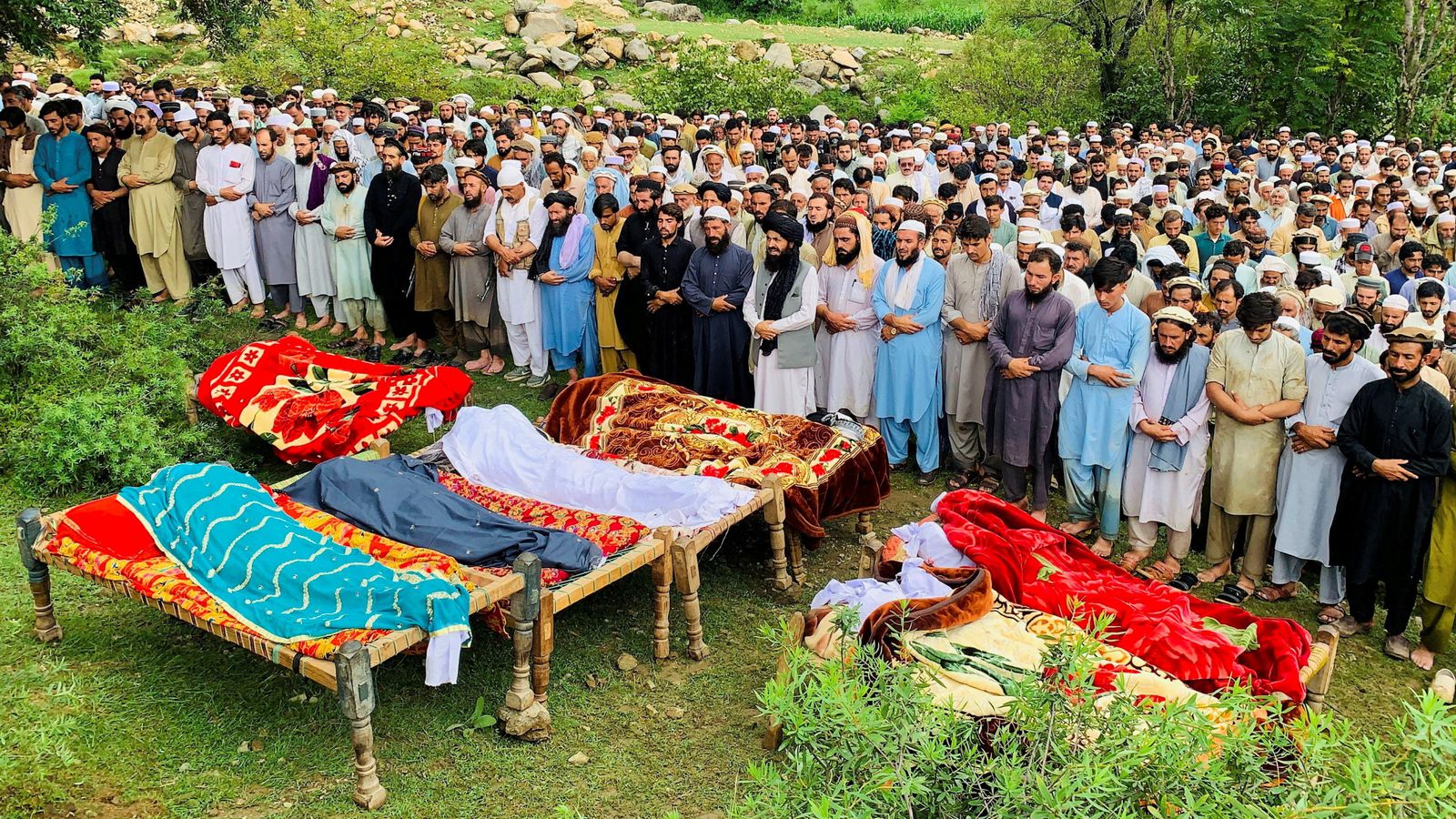Catastrophic flash floods, triggered by relentless monsoon rains, have devastated parts of northern Pakistan and Indian-administered Kashmir, leaving more than 300 people dead and hundreds injured or missing. The humanitarian crisis has overwhelmed local authorities, as rescue teams work around the clock to locate survivors amid landslides, washed-out roads, and collapsed buildings.
Pakistan’s Khyber Pakhtunkhwa Province Hit Hardest
The worst destruction has been reported in Khyber Pakhtunkhwa, where local officials confirmed at least 307 deaths in the past 48 hours alone. In Buner district, over 180 people have been killed, making it the epicenter of the unfolding disaster. Shangla, Mansehra, Swat, Bajaur, Battagram, and Lower Dir are among the other districts grappling with mass casualties and widespread devastation.
The Provincial Disaster Management Authority warned that the number could rise as dozens remain unaccounted for. In Shangla, 34 lives were lost when a roof collapsed under the pressure of floodwater. Elsewhere, entire villages have been submerged or wiped out by mudslides and debris flows.
“Heavy rainfall, landslides in several areas, and washed-out roads are causing significant challenges in delivering aid, particularly in transporting heavy machinery and ambulances,” said Bilal Ahmed Faizi, a spokesman for the provincial rescue service.
Emergency Response Stretched as Access Routes Blocked
Emergency responders — nearly 2,000 personnel — are navigating on foot to reach remote mountainous areas due to road closures. Although medical camps and temporary shelters have been set up, aid distribution has been slow in areas like Malik Pura and Pir Baba, where damage is most extensive.
In Mansehra, more than 1,300 tourists were rescued from high-altitude locations. Many are still stranded in less accessible zones.
Cross-Border Toll Rises in Indian-Administered Kashmir
Across the Line of Control, Indian-administered Kashmir has also suffered from heavy floods, especially in the Kishtwar district, where at least 60 deaths have been confirmed. Rescue teams continue to search for dozens of missing individuals. Over 150 people have been injured, and the scale of property loss is still being assessed.
Helicopter Crash Adds to Tragedy
As relief missions ramped up in Pakistan’s north, a government MI-17 helicopter carrying supplies to Bajaur crashed on Friday due to adverse weather in Mohmand district. The crash claimed all five onboard, including two pilots.
“An MI-17 helicopter of the provincial government, carrying relief goods for rain-affected areas of Bajaur, crashed… due to bad weather. Five crew members, including two pilots, were killed,” said Chief Minister Ali Amin Gandapur.
Weather Warnings Continue as Monsoon Lingers
The Pakistan Meteorological Department has issued new warnings for continued heavy rainfall in the northwest, urging residents in vulnerable areas to evacuate if possible. The current monsoon season, which began earlier than expected, has been unusually prolonged and intense.
In a statement, Deputy Prime Minister Ishaq Dar offered his condolences and highlighted the scale of loss, “Our hearts go out to the families who have lost loved ones, to those who are injured, and many whose homes and livelihoods have been swept away.”
Climate Change Likely a Major Factor
A recent assessment by World Weather Attribution, a global team of scientists, found that rainfall in Pakistan during the period from June 24 to July 23 was 10–15% heavier than normal, a spike linked directly to global warming.
According to Syed Muhammad Tayyab Shah from the national disaster agency, the country — already listed among the most climate-vulnerable nations — is experiencing increasingly severe weather events, with the current floods being a grim reminder.
Since the onset of the monsoon season in late June, over 500 lives have been lost to flood-related incidents in Pakistan alone, including 159 children. Experts warn that without urgent climate adaptation and infrastructure upgrades, such events may become the new norm.


